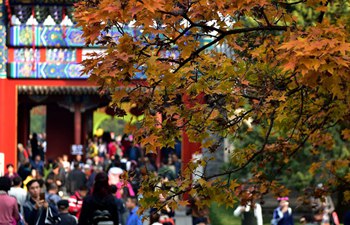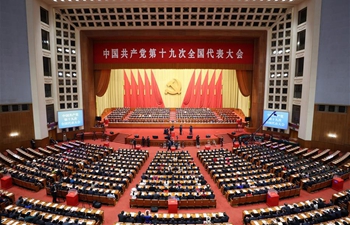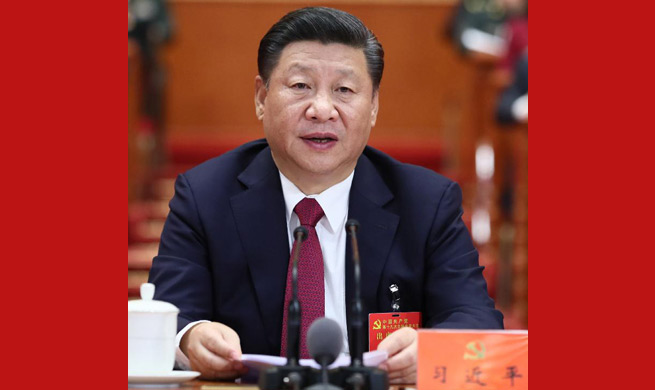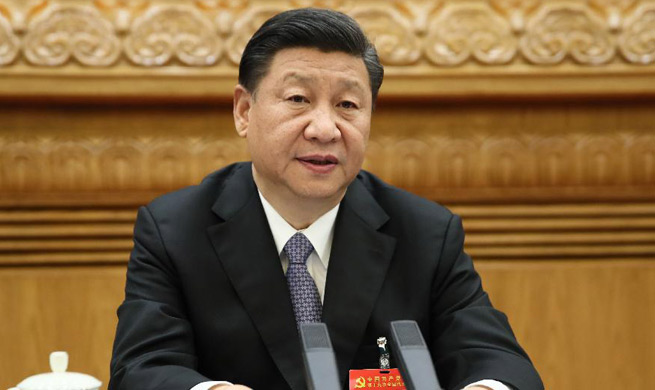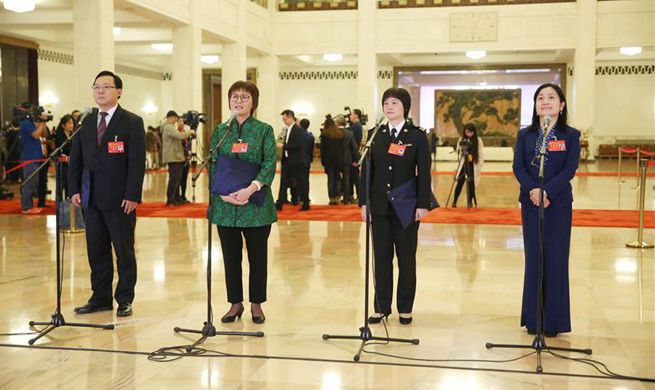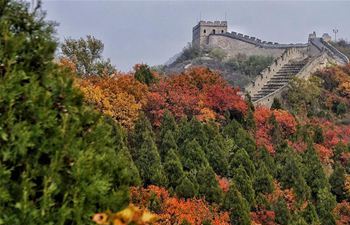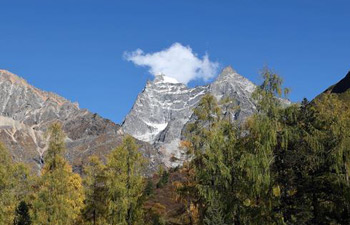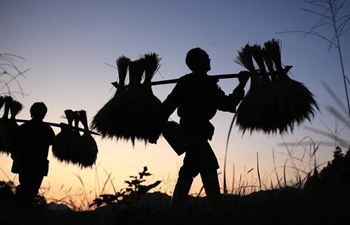by Shristi Kafle
KATHMANDU, Oct. 24 (Xinhua) -- Rice crop, as one of the staple foods in Nepal, spanned 1.553 million hectares of land in the Himalayan country although production was limited to only 5.23 million metric tons in fiscal year 2016-2017.
Nearly 70 percent of the Nepali population work in the agriculture sector which significantly contributes to national gross domestic product.
However, Nepal still struggles to produce an adequate supply of food, especially rice, hence imports from other South Asian countries are vital.
To help Nepal cope with its low production, which has resulted in a food deficit, the Chinese government has been helping Nepal to promote production through Chinese hybrid rice since 2016.
The Chinese and the Nepali governments signed an agreement on agricultural technical cooperation project in February 2016, which will last for three years.
During the first phase, China has been providing economic and technical assistance in the agricultural sector, especially for rice and maize production.
Yuan Longping High-tech Agriculture Co. Ltd, a Chinese implementing agency, is working in cooperation with the National Agricultural Research Council (NARC) of Nepal.
"We have been carrying out various comparative trials and high-yield demonstrations of Chinese hybrid rice in Nepal," Zhang Xiaohui, agronomist and team leader of the agricultural technical cooperation project, told Xinhua.
"We have already completed the trial of 67 varieties in five different locations covering mid hills to southern plains," Zhang said on Monday.
He explained that Chinese hybrid rice grows in a stable form with strong resistance, has long panicles and has a higher yield than the local varieties found in different parts of Nepal.
As part of the trial, Bhaktapur, which lies a few kilometers away from central Kathmandu, was selected for the plantation of Chinese hybrid rice this year.
Two varieties LPNBR 1628 and LPNBR 1632 were planted in around 10 ropanies of land, according to local measurement.
Fifty-year-old Bimala Shrestha has been producing a local variety of rice and seasonal vegetables in her field for over two decades. However, with the lowering yield, she always struggles to secure a decent income.
But to everyone's surprise, Shrestha has produced more than seven tons of rice this year, the highest yield in the last 18 years, thanks to the Chinese hybrid rice. She said that she had never imagined that the production would be this high.
"I cannot express how happy I am. Production is incredibly high this time compared to previous years," Shrestha told Xinhua
"Since we are still harvesting, it's hard to calculate but our estimation is between seven to nine tons per hectare. I am thankful to the Chinese for their assistance," she said, while working in her field.
The mother of four explained that her income has increased threefold compared to previous years, which will help her family to lead a more comfortable if not luxurious life.
A farmer from the neighboring district of Kavre, Rewati Prasad Timalsena, 59, was in attendance. Timalsena told Xinhua, "Production in my field increased by four times this year, so has the income. The Chinese rice variety has been a real boon."
According to government statistics, 38 out of 75 districts are thought to suffer from a food deficit in Nepal, which means half of the country is in a food crisis. Nepal usually imports rice from South Asian countries like India and Bangladesh.
As the Chinese rice is gradually getting popular, the government has been planning to register these rice varieties and self-produce the seed within a couple of years.
Experts said that if Chinese varieties will continue to be planted on a large scale, then the dependency of Nepal on other countries for rice imports will soon end.
Ananda Kumar Gautam, director at the National Agricultural Research Council, told Xinhua, "Under this project, we have been testing the Chinese hybrid rice and we found that its production capacity is much higher than our local variety. I think we can expand its plantation so that the government can reduce rice imports."
The Chinese government has also been assisting Nepal in training the manpower working in the agriculture sector.
They have also agreed to open a post-harvest support lab that will boast high-end Chinese machinery.






